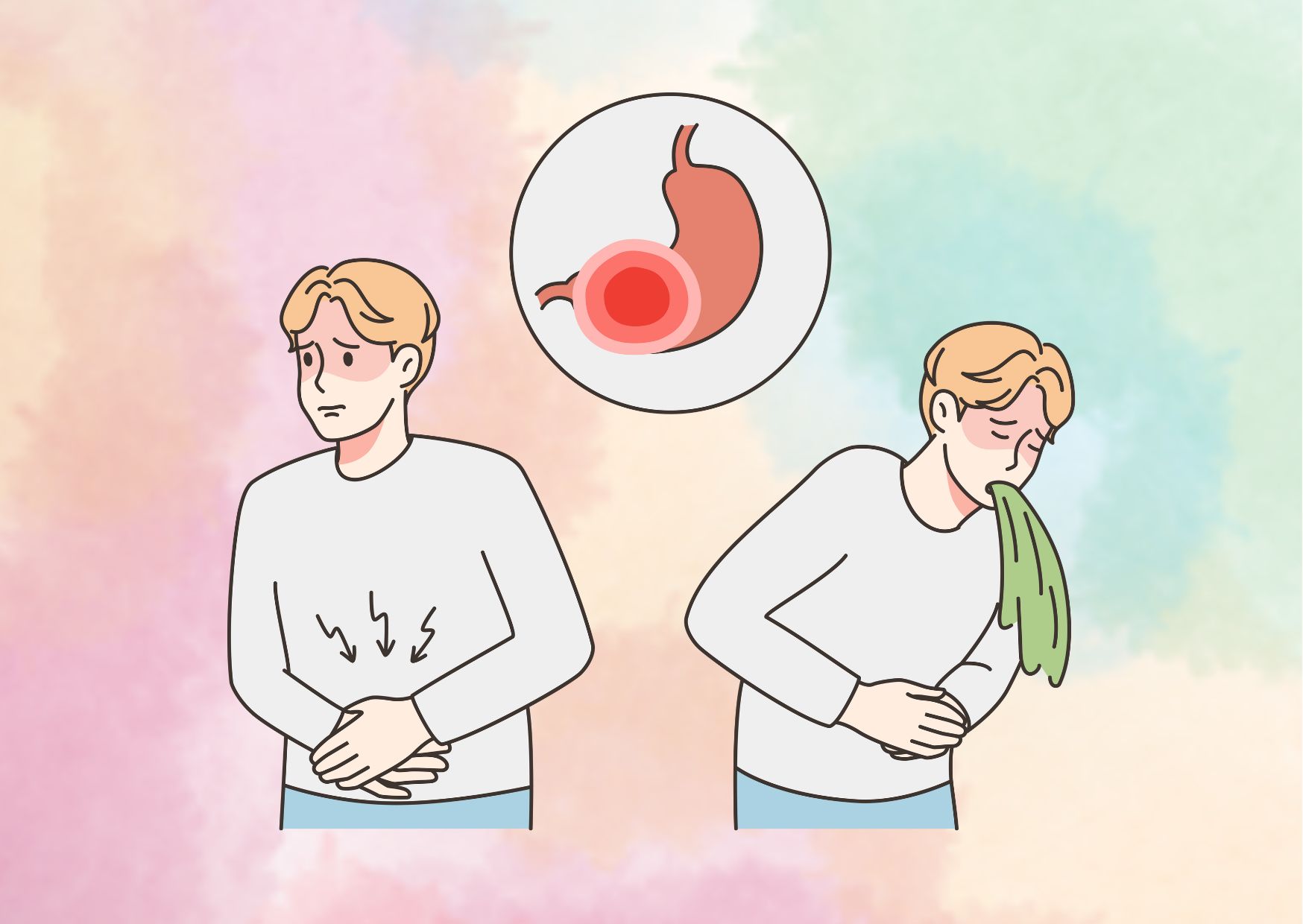10 Telling Symptoms of Emetophobia: Causes, Coping and Treatment Strategies
Emetophobia, the intense fear of vomiting or seeing others vomit, is a relatively uncommon yet debilitating condition affecting approximately 0.1% of the global population. While seemingly innocuous, the phobia can significantly impact daily life, often leading to anticipatory anxiety, avoidance behaviors, and interference with routine activities. Women and those assigned female at birth are more commonly affected by this specific phobia.
The article delves into the complexities of emetophobia, exploring its causes, triggers, symptoms, and the mental and physical toll it can take. We’ll examine personal experiences that shed light on the condition’s profound impact. Additionally, we’ll discuss proven coping strategies, treatment options like therapy and medication, and the importance of seeking professional help to manage fear of vomiting effectively. Whether you or a loved one struggles with this phobia or you seek to understand it better, this comprehensive guide offers valuable insights and practical approaches.
Personal Experiences
Emetophobia, the intense fear of vomiting or seeing others vomit, can have a profound impact on individuals’ lives. Through personal accounts, we gain a deeper understanding of the challenges faced and the resilience required to overcome this phobia.
Kay’s Journey
Kay’s emetophobia developed after a traumatic experience of vomiting at age 10, which led to years of panic attacks, food restriction, and avoidance behaviors. In her 20s, her fear of vomiting significantly impacted her life, causing weight loss, inability to travel or eat normally, and severe panic attacks. After a particularly severe episode while traveling, Kay dedicated herself to recovery, finding a therapist who specialized in emetophobia and undergoing extensive exposure therapy over 1.5 years. Through this hard work and perseverance, Kay was able to overcome her fear of vomiting and regain her health, returning to work and school.
Becca and Aimee’s Ongoing Journeys
For Becca, the phobia began when she was 7-8 years old after witnessing her mother vomiting during cancer treatment, and the fear became worse and more debilitating over time. Aimee’s emetophobia developed as a result of chronic nausea related to her anxiety, and seeing or hearing others vomit would trigger intense fear and panic. While they have made progress in managing their emetophobia, it remains an ongoing journey.
Annabel’s Recovery Path
Annabel’s fear of vomiting was triggered by a negative experience with alcohol at age 17, leading her to restrict her diet and become severely malnourished. Her fear of vomiting caused her to avoid many situations and activities for 3 years. Recovery has been a long and difficult journey for Annabel, with ups and downs, but she credits her supportive family as a key factor in her ongoing recovery.
Advice from Individuals with Emetophobia
- Recognize that thoughts are not facts, and having a phobia does not make you weak.
- Be open to talking about your emetophobia and seeking professional help.
- Keep going, be proud of your progress, and don’t be afraid to seek professional help.
- Utilize coping strategies like websites to check for vomiting scenes, practicing breathing exercises, and finding medication helpful.
- Understand that recovery is possible with the right help and determination, even for severe cases of emetophobia.
Through these personal experiences, it is evident that fear of vomiting can lead to avoidance behaviors, such as not being around alcohol, not eating at restaurants, not wanting children, and being afraid to spend time with people. However, with therapy, these avoidance behaviors can be addressed and improved. Kay emphasizes that recovery is possible with the right help, and that she is now living a fuller, happier life compared to when she was consumed by emetophobia.
Causes and Triggers
Traumatic Experiences
Emetophobia often develops after a negative experience with vomiting, such as vomiting in public or having an illness that caused excessive vomiting. These traumatic incidents can leave a lasting impact, leading to an intense fear of vomiting or witnessing others vomit.
Specific Triggers
Individuals with fear of vomiting may experience anxiety and panic attacks when exposed to certain triggers, including:
- Feeling nauseous or experiencing stomach discomfort
- Seeing someone vomit or hearing retching sounds
- Encountering words or phrases related to vomiting
- Being in unfamiliar places or situations where vomiting may occur
Unexplained Origins
In some cases, emetophobia can develop without a clear, identifiable cause. The phobia may stem from a combination of genetic predisposition, learned behaviors, or environmental factors that contribute to the fear of vomiting.
Past Illnesses and Experiences
Causes of emetophobia frequently originate from past negative experiences with vomiting, such as:
- Severe bouts of illness involving excessive vomiting
- Traumatic incidents of vomiting in public or embarrassing situations
- Witnessing a loved one or family member struggle with vomiting during an illness
These experiences can leave a lasting imprint, leading to the development of emetophobia and a heightened sensitivity to triggers associated with vomiting.
Symptoms and Behaviors
Emetophobia, the intense fear of vomiting or seeing others vomit, manifests through a range of physical and psychological symptoms, as well as avoidance behaviors that can significantly impact an individual’s daily life.
Physical Symptoms
When exposed to triggers related to vomiting, individuals with fear of vomiting may experience:
- Anxiety and Panic Attacks: Overwhelming feelings of fear, dread, and panic can arise, often accompanied by rapid heartbeat, sweating, and difficulty breathing.
- Nausea and Stomach Discomfort: The mere thought of vomiting can induce nausea and abdominal distress, even in the absence of an actual physical cause.
- Dizziness and Lightheadedness: The intense anxiety associated with emetophobia can lead to feelings of dizziness or vertigo, potentially increasing the risk of fainting or falls.
Psychological Symptoms
Emetophobia can also manifest through various psychological symptoms, including:
- Obsessive Thoughts and Rumination: Individuals may find themselves consumed by intrusive thoughts and worries about vomiting, leading to a constant state of hypervigilance.
- Anticipatory Anxiety: The fear of encountering potential triggers can result in persistent anxiety and dread, even in situations where vomiting is unlikely to occur.
- Emotional Distress: The intense fear and anxiety associated with fear of vomiting can lead to feelings of sadness, frustration, and even depression, further exacerbating the condition.
Avoidance Behaviors
To cope with their overwhelming fear, individuals with emetophobia may engage in various avoidance behaviors, such as:
- Avoiding Certain Foods and Beverages: Individuals may restrict their diet to foods they perceive as “safe,” avoiding anything that could potentially cause nausea or vomiting.
- Avoiding Social Situations: Gatherings, restaurants, or any situation where vomiting could occur may be avoided, leading to social isolation and withdrawal.
- Excessive Handwashing and Hygiene Rituals: To minimize the perceived risk of contracting illnesses that could lead to vomiting, individuals may engage in excessive handwashing or other compulsive behaviors.
- Restricting Travel and Activities: Fear of being in unfamiliar environments or situations where vomiting could occur may lead to a reluctance to travel or participate in certain activities.
- Avoiding Pregnancy and Parenthood: The potential for morning sickness or exposure to childhood illnesses may deter individuals with emetophobia from considering pregnancy or having children.
It is important to note that while anxiety alone does not cause vomiting, the symptoms and behaviors associated with fear of vomiting can significantly impair an individual’s quality of life, making it crucial to seek professional help and appropriate treatment.
Suggestion for read: Overcoming Frightening Thalassophobia
Mental Health Impact
Emetophobia, the intense fear of vomiting or seeing others vomit, can have a profound impact on an individual’s mental well-being. The constant anticipatory anxiety and avoidance behaviors associated with this phobia can lead to a range of mental health complications.
Anxiety and Depression
The relentless worry and fear surrounding vomiting can trigger or exacerbate anxiety disorders. Individuals with emetophobia may experience persistent feelings of dread, panic attacks, and an overwhelming sense of helplessness. This constant state of heightened anxiety can contribute to the development of depression, further compounding the mental health challenges.
Social Isolation
Emetophobia often leads to avoidance behaviors, such as avoiding social situations, gatherings, or any environment where vomiting could potentially occur. This social withdrawal can result in feelings of loneliness, low self-esteem, and a diminished quality of life.
Eating Disorders
In an attempt to control or prevent vomiting, some individuals with emetophobia may develop disordered eating patterns. Restrictive diets, food avoidance, and excessive calorie counting are common coping mechanisms, which can lead to malnutrition and the development of eating disorders like anorexia or bulimia.
Obsessive-Compulsive Disorder (OCD)
Emetophobia shares similarities with OCD, as individuals may engage in compulsive behaviors or rituals to alleviate their fear of vomiting. These rituals, such as excessive handwashing or avoiding certain locations, can become all-consuming and interfere with daily functioning.

